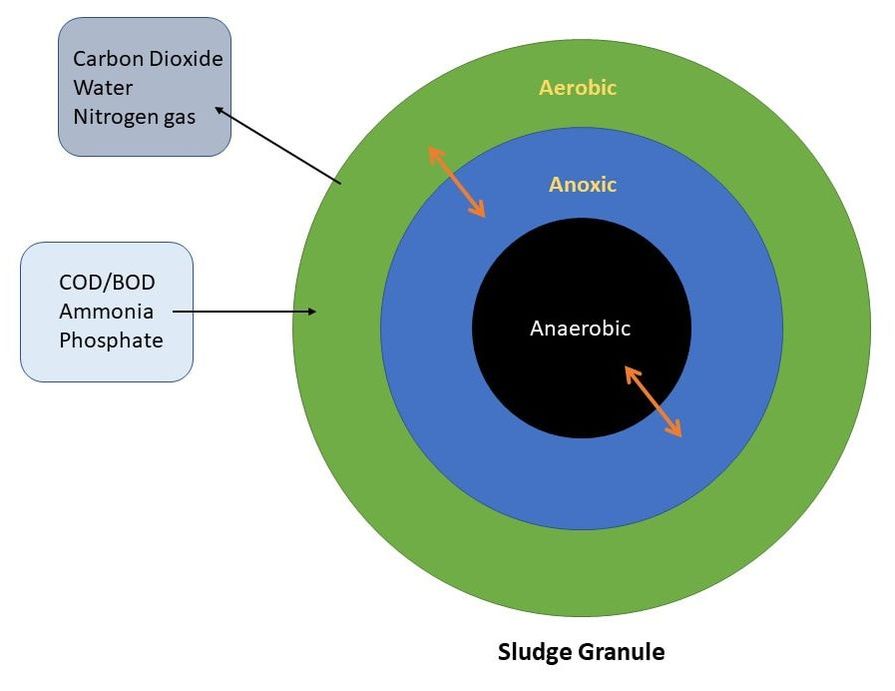Given the complexities of operating a biological nutrient removal system, research on creating alternative treatment technologies has been a priority. One of the promising technologies is aerobic granular sludge(AGS). While granular anaerobic systems have existed for years, aerobic granules are new to wastewater treatment. In nature, microbes form diverse communities in the form of biofilms (or floc in activated sludge). As the microbial community matures, distinct ecological zones form inside the film. The film surface has free oxygen present, favoring aerobic organisms. In the aerobic zone you have a highly diverse collection of microbes including ammonia oxidizing bacteria (AOB). Moving deeper into the biofilm, an anoxic zone exists. In the anoxic zone, free oxygen is not present and bacteria work by using alternative electron acceptors such as nitrate/nitrite. Given ammonia oxidation in the aerobic surface layer, the anoxic zone bacteria make use of nitrate/nitrite produced in the aerobic layer. In mature granules, we also see the presence of anammox bacteria that utilize ammonium (NH4+) and nitrite (NO2) to make dinitrogen gas (N2). Anammox microbes are interesting in that they reduce oxygen requirements for ammonia removal while also avoiding the need to remove nitrate/nitrite in a separate step. At the core of the granule, or deepest section of a biofilm, exists a true anaerobic zone. This section utilizes soluble organics and contains both PAO that instead of using aerobic conditions to uptake phosphorus utilize nitrate/nitrite present in low concentrations at the deepest part of the granule/biofilm.
The key part of aerobic granule systems is the ability to build a fast settling granular biomass. This has been accomplished in SBR (batch reactors) where operators can control operational parameters including mixing, aeration, and residence time with maximum flexibility. In practice, granular systems have performed will for treatment, but may require a tertiary clarifier to remove residual solids that come from sloughing biomass.


 RSS Feed
RSS Feed